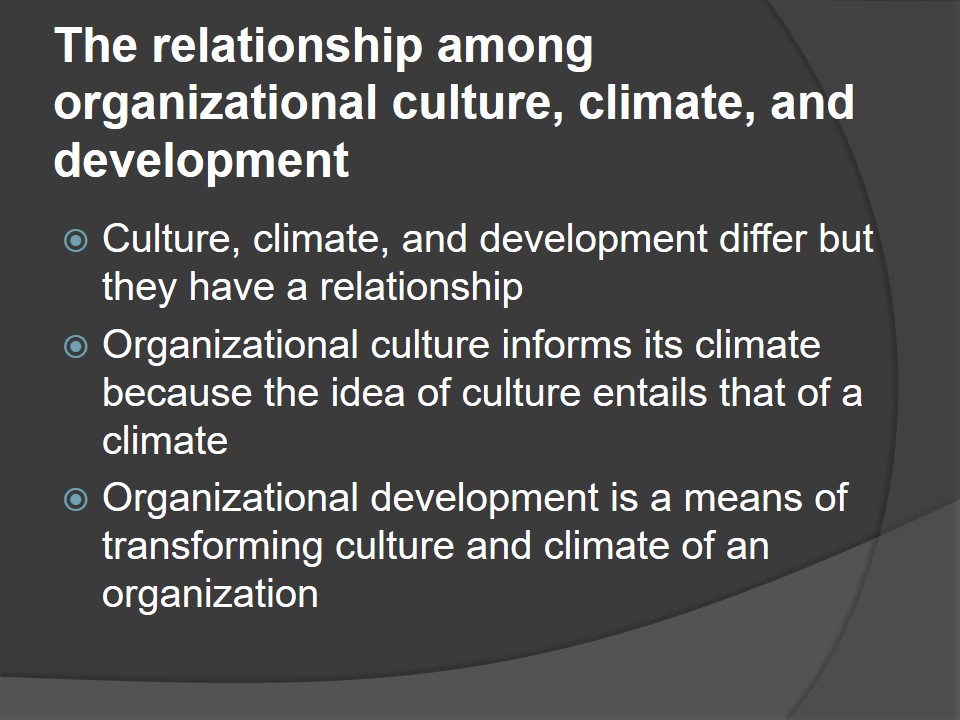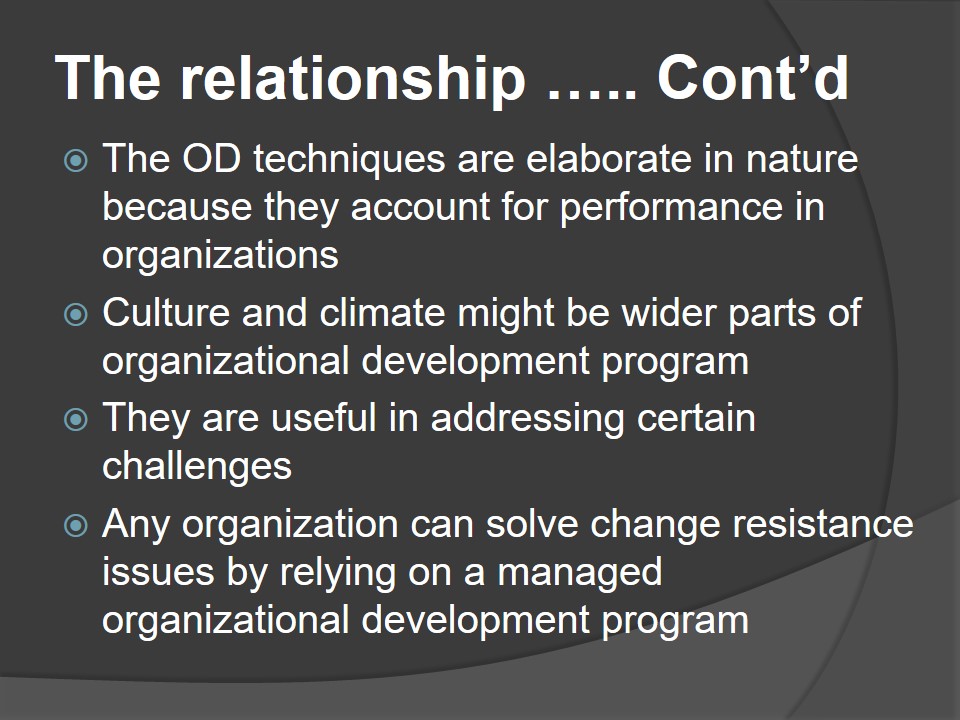Change
- Organizations should be responsive to change, be innovative and flexible.
- Change influences competitive advantage and success of organizations.
- Human behavior is critical in change processes of an organization.
- Change is an on-going process that never ends and requires effective management.
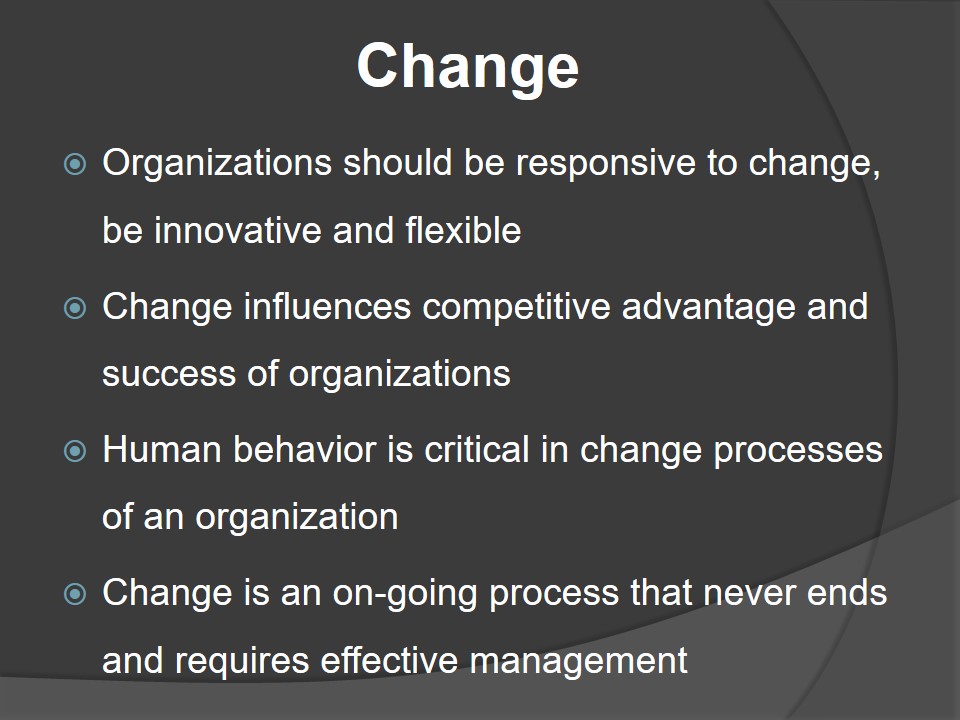
Types of change
- Technological.
- Structural.
- People.
- Task.
Accepting change is difficult, and people tend to resist change because of fear, anxiety, uncertainty, and the need to perpetuate the status quo.

Managing resistance to change
- Use change models to overcome resistance to change.
- Change models ensure effective management of change processes.
- Some of the change models include Lewin’s and Lussier’s Change Models.
- These models are effective when used well to manage changes in organizations because they define change stages.
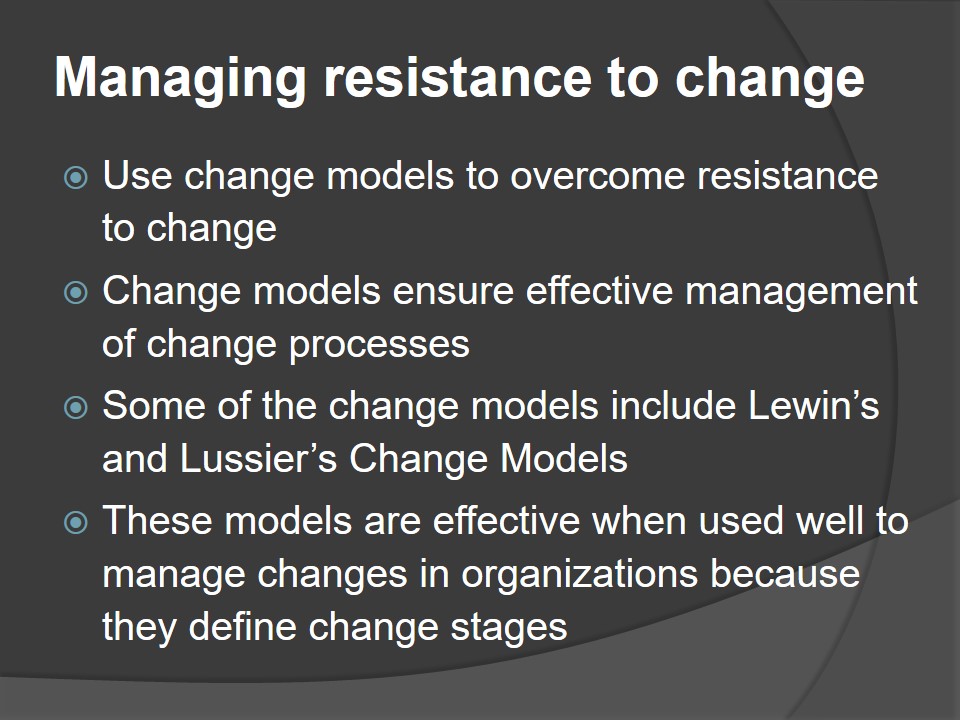
Organizational culture
- Organizational cultures reflect shared values and beliefs among employees, which affect how they behave.
- Newcomers should learn such cultures.
- Two dimensions of organizational culture:
- Strong and weak;
- Positive and negative.
- Culture is learned, but incompatibility is not acceptable in some organizations.

Organizational climate
- Organizational climate reflects lasting qualities of internal aspects of an organization as defined by employees.
- The climate shows shared perceptions (the way things are done).
- An organization may have a strong culture and a negative climate.
- Rewards, structure, responsibility, warmth, support, and risks among others depict dimensions of climate in an organization.
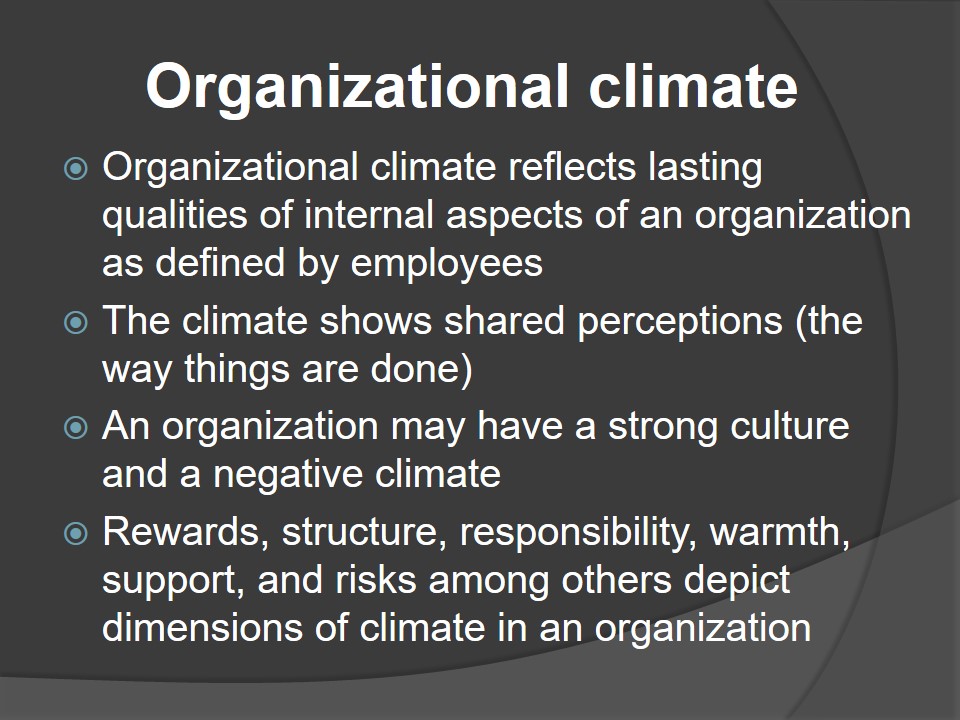
Organizational development (OD)
- OD is a continuous, planned process of change that helps organizations to enhance effectiveness in overcoming challenges and achieving their strategic objectives.
- Organizational development is critical in managing and changing climate of an organization by diagnosing problems.
- It requires a change agent (a person) to manage OD techniques.

Techniques of OD
- Training and development.
- Performance appraisal.
- Survey feedback.
- Force field analysis.
- Team building.
All these techniques include training.
Problem diagnosis methods may include reviewing records, observing, interviewing people, using questionnaire, and conducting meetings.
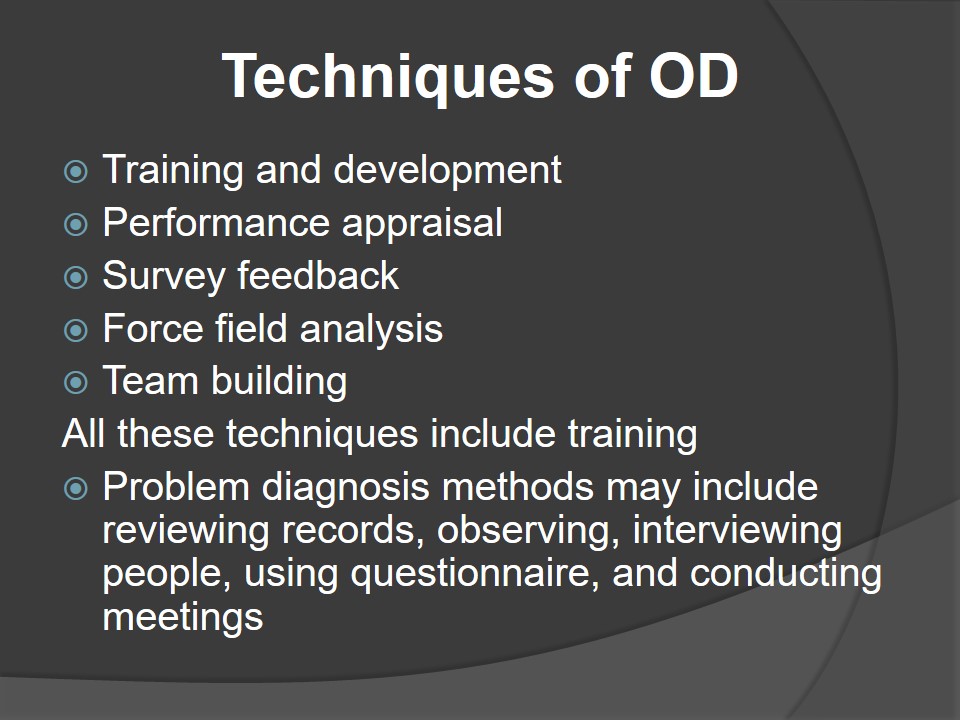
Global Differences
- Globalization has brought about the concept of global differences in organizations.
- There are Big Five personality types globally.
- People in all cultures depict variations in openness to change.
- Cultural values have significant impacts on change.
- The US values change and creates a sense of urgency.
- Other countries respond slowly to change.
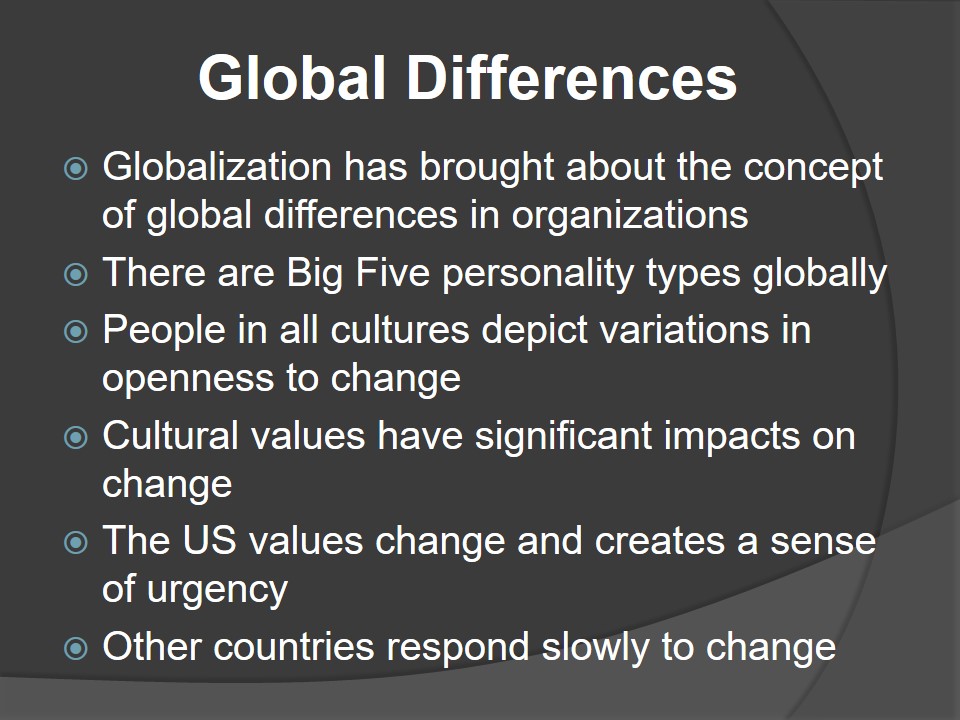
The relationship among organizational culture, climate, and development
- Culture, climate, and development differ but they have a relationship.
- Organizational culture informs its climate because the idea of culture entails that of a climate.
- Organizational development is a means of transforming culture and climate of an organization.
- Culture, climate, and development differ but they have a relationship.
- Organizational culture informs its climate because the idea of culture entails that of a climate.
- Organizational development is a means of transforming culture and climate of an organization.
